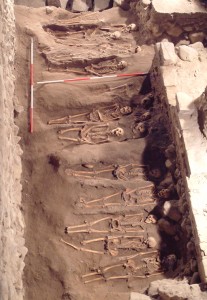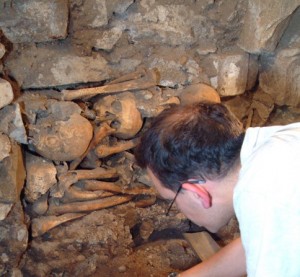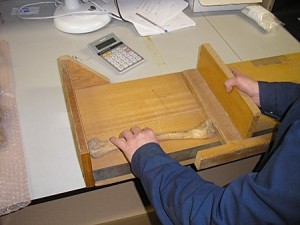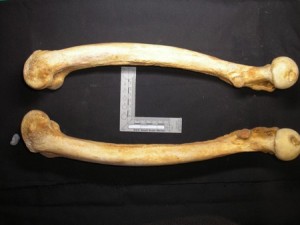
Given that all the area of the dig had been either inside the chancel-end of the church, or outside in the graveyard, a large number of burials were anticipated. This photograph shows the area which had been the graveyard to the east of the church (seen to the right) until St Mary’s Chapel (to the left) was built in the mid-1400s. The number of burials surpassed the expectation. In total a little over 2000 individuals were represented. Over 900 of these were complete (or partially complete) burials, whilst the remainder were ‘disarticulated’, meaning that they had been disturbed in some way.

Often the disturbance happened when subsequent graves were being prepared. However, there were several places where bones had been built into the walls as shown in the photograph.

Bones can tell osteo-archaeologists a great deal about the person such as age, sex, some of the diseases they suffered from, how good their diet had been. The remains uncovered have been studied in considerable detail and it is hoped that this fascinating information can be published in due course.

A crypt for their reburial has been designed for positioning below the floor of the new internal building. Despite the Covid-19 difficulties, this was built in 2020 thanks to an award from the Town Centre Fund via Aberdeen City Council. All the remains will be re-interred as part of a religious ceremony.